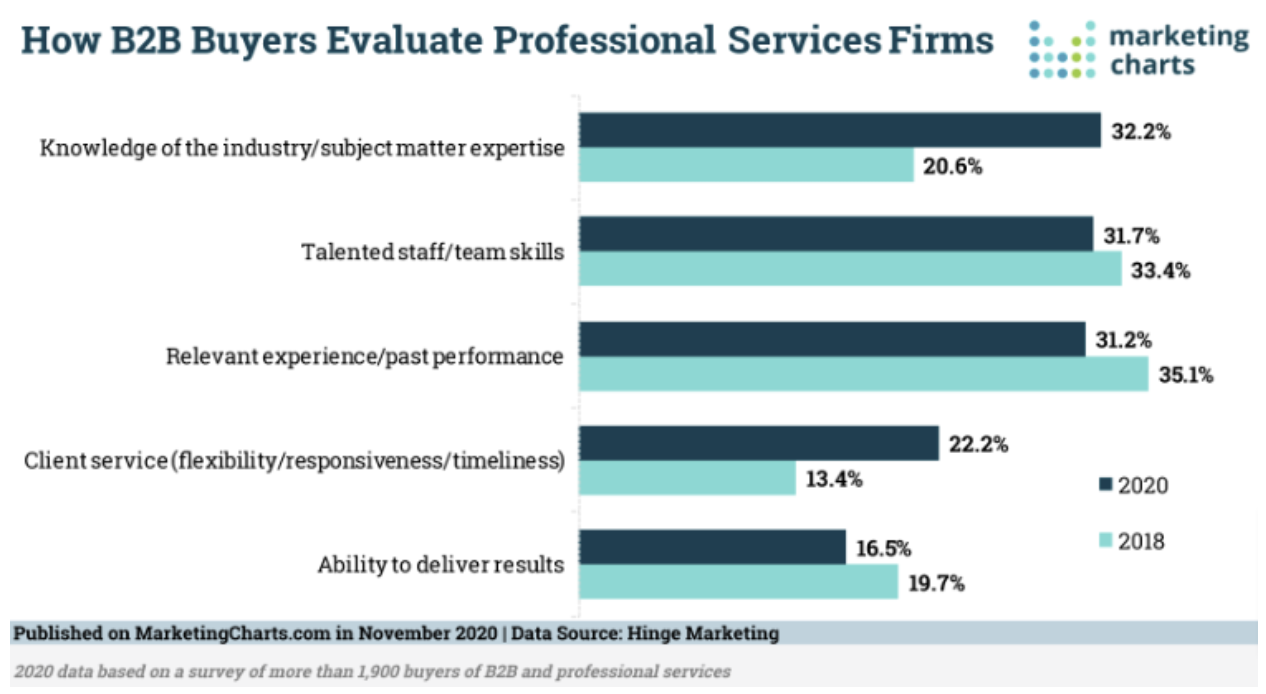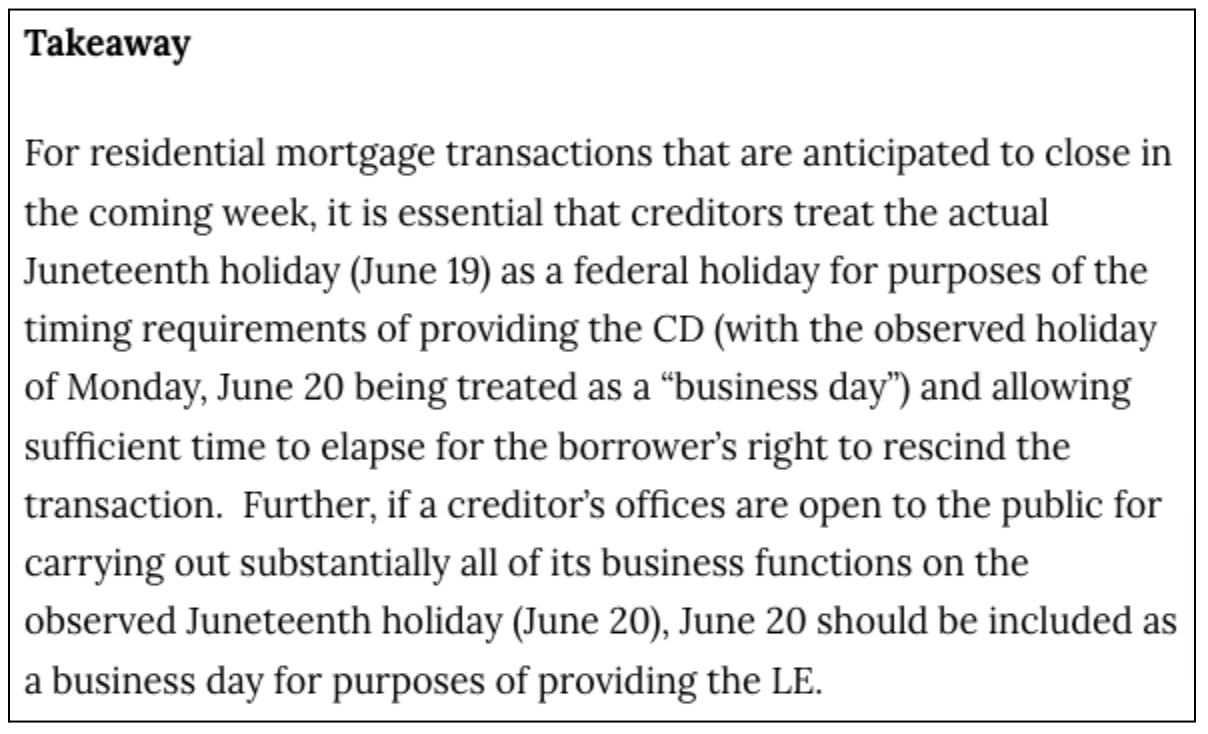The legal sector has traditionally been a little skeptical about marketing in general, and digital marketing in particular.
The numbers bear this out. As of 2020, three-quarters of Fortune 500 companies had a public-facing blog, according to the University of Massachusetts Dartmouth Center for Marketing Research.
By contrast, just three-fifths of law firms with 100+ lawyers had a blog in 2021, per research from the American Bar Association (ABA), dropping to:
- 33% for firms with 10-49 lawyers
- 29% for firms of 2-9 lawyers
- 12% for solo practices
However, there are signs that lawyers are increasingly waking up to the benefits of blogging.
The ABA’s latest research revealed that firms that maintain blogs have clear goals for their blogging activity, with:
- 88% saying they blog for client development
- 47% blogging for career development and networking purposes
- 35% doing blogging for SEO
What’s more, nearly half of all legal practice bloggers said they had retained a client as a direct result of their blog.
Ready to get started with blogging for lawyers?
Below we’ll discuss three tried-and-trusted blogging strategies that are tailor-made for the legal profession:
- Demonstrate subject matter expertise with actionable content to attract and convert new clients.
- Mitigate the time pressure on lawyers by implementing a collaborative blogging process.
- Boost engagement with your blogs by weeding out obscure language and avoiding center-embedding.
3 Blogging Best Practices for Lawyers
1. Demonstrate Subject Matter Expertise to Win Clients
Blogging isn’t just a “thing” you should do because everyone else is doing it.
As with any sort of marketing, it needs to have a clear purpose — and for most firms, that’s going to be attracting and converting new clients..
So how does blogging for lawyers fit in with that aim?
Well, evidence suggests that within the broad professional services sector, writing highly authoritative content on topics that relate to your field(s) of practice plays a big part in convincing potential clients that you’re up to the task.
Indeed, one survey of nearly 2,000 buyers named “subject matter expertise” as the #1 way to evaluate professional services firms, with the perceived value climbing by 11.6 percentage points from 2018 – 2020.
Alston & Bird show us how blogging for lawyers can be an effective tool in demonstrating subject matter expertise.
They publish regular blogs discussing key, legal-related challenges affecting their current and potential clients in their target markets.
For example, they published a lengthy post explaining how the 2022 Juneteenth federal holiday presented tricky compliance issues for some of the timings involved in residential mortgage transactions.
But our advice here isn’t just to “write about topics that interest your audience.” Everyone already does that, so following suit won’t position you as an expert.
To create a piece of content that demonstrates real expertise, you need to make it actionable. Don’t just tell people about a challenge they’re facing, explain what they should do about it.
Alston & Bird do this by adding a “takeaway” section at the end of their blog posts:
If you can’t find a way to make your latest blog more actionable, it’s a good sign that the subject matter doesn’t speak to an audience pain point — a persistent problem your clients need your help with.
If you’re not addressing a pain point, your blog post is unlikely to resonate with the people you’re trying to attract, engage, and convert.
Key Actions
- Make sure every blog post you write is positioned around a specific customer pain point — a challenge they’re facing or a goal they want to achieve.
- Add clear takeaways to your blogs that break down how your audience should take action on the pain point they’re facing.
2. Build a Collaborative Process to Support Content Creation
Lawyers are notoriously time-poor.
So much so that the latest LexisNexis InterAction Marketing & Business Development Survey named “obtaining lawyer participation” as one of the top challenges for law firms looking to boost their sales and marketing efforts.
It’s not hard to see why this is a big problem when it comes to blogging for lawyers.
After all, lawyers are the people with real expertise in their fields — the sort of expertise that a professional marketer could never hope to replicate on their own.
And, as we’ve already noted, demonstrating expertise is a huge factor in winning new business. It’s something you just can’t do without.
But there are only so many hours in the day, and few lawyers can afford to spend them writing blog posts.
That’s why it pays to develop a collaborative content process that takes some of that time pressure away.
The ideal content creation workflow will vary from one firm to another, depending on their available resources. As an example, when Content Conquered works with subject matter experts, our workflow often looks like this:
- The client brainstorms a few rough blog themes or blog goals and shares them with Content Conquered.
- Content Conquered researches the topics, fleshes them out, and identifies specific areas where expert insight is required.
- Content Conquered interviews the client to add their expert input, as needed.
- Content Conquered writes up a first draft of the blog post.
- The client reads through the first draft and either approves or sends back for amendments.
With this approach, the lawyer’s involvement is broken down into small, easily manageable chunks of time, rather than long periods of writing. In fact, they may not need to do any writing at all!
You can elevate the collaborative content process by using a project management or productivity tool to smooth communications between the various stakeholders. There are lots of options, many of which offer free versions. Examples include:
Key Actions
- Assign responsibility for writing your blog posts to your marketing team, a marketing agency, or a freelance content partner.
- Define a collaborative process for content creation, being clear to spell out who has responsibility at each stage, and when lawyers will be required to provide feedback.
- Sign up for a project management tool to ease communications between marketing departments and lawyers, reducing the chance of important messages getting lost in the depths of email inboxes.
3. Use Simple Language (& Avoid Center-Embedding)
It’s no secret that legalese is near-impossible for laypeople to follow.
Some firms use this as an excuse not to blog at all. “If no one can understand what we’re saying, why should we bother trying?”
But there’s no need to be so defeatist, because research shows that the biggest issue isn’t all that complex.
An MIT study used a text analysis tool to analyze about 3.5 million words of legal documentation and identified the main culprit: center-embedding.
In short, center-embedding is when the writer introduces the subject of a sentence, then cuts away to insert a definition, before segueing back to the subject. The researchers gave the following example, in which a lengthy definition appears in parentheses:
“In the event that any payment or benefit by the Company (all such payments and benefits, including the payments and benefits under Section 3(a) hereof, being hereinafter referred to as the ‘Total Payments’), would be subject to excise tax, then the cash severance payments shall be reduced.”
As an alternative, they suggested:
“In the event that any payment or benefit by the Company would be subject to excise tax, then the cash severance payments shall be reduced. All payments and benefits by the Company shall hereinafter be referred to as the ‘Total Payments.’ This includes the payments and benefits under Section 3(a) hereof.”
The researchers also highlighted a secondary, more obvious, problem: overuse of obscure terminology.
Sometimes, this is simply unavoidable. But in other cases, far more common alternatives exist. For example, you could replace “lessee” with “tenant.”
And remember, we’re talking about blogging here, not writing watertight legal contracts — so you can afford to simplify your language a little.
Ultimately, this all boils down to one common issue with blogging for lawyers. Your audience is rarely going to be fellow lawyers, so you need to write in a way that us simpler folk will understand.
The Shapiro Law Firm gets this right by publishing regular blogs discussing basic legal processes that are directly relevant to their clients.
For instance, they created a guide to preparing for a marriage-based Green Card interview, incorporating simple but important information like the types of documentation to bring.
They also embed videos in these blog posts, which is another smart move — remember, for some people, the written word just isn’t the best way to take in new information.
Key Actions
- Avoid center-embedding like the plague.
- Always swap out complex, obscure terminology if simpler alternatives exist.
- Where possible, broaden the appeal of your written blog posts by communicating in other ways, such as through video or infographics.
Don’t have the time to do all the blogging yourself? Tried working with freelancers and been disappointed with the results? Content Conquered is here to help!
Get in touch with us today to see how our collaborative content process takes the hard work out of blogging for lawyers.




